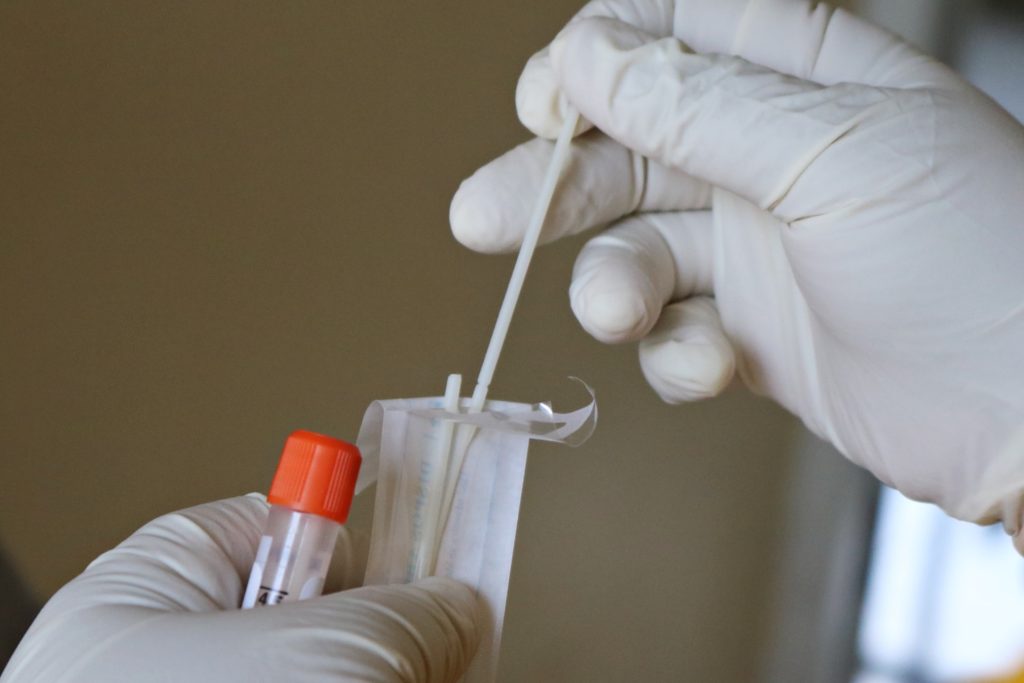
The Los Angeles County Department of Public Health announced Thursday that deaths amongst people experiencing homelessness increased to a record 1,267 in 2019 and drug overdose was the leading cause with the greatest increase. In 2018, there were 1,114 deaths among people experiencing homelessness.
This is a second annual report on mortality among people experiencing homelessness in L.A. County and includes new data for 2019 and part of 2020. In 2020, the overall mortality rate increased only slightly due to an even greater increase in the total number of homeless people. However, the drug overdose mortality rate increased substantially during the same period.
Drug overdoses have been the leading cause of death among L.A. County’s homeless since 2017 and the overdose rate increased by 84% between 2016 and 2019. For the combined years of 2017 to 2019, people experiencing homelessness were 36 times more likely to die of drug overdose than people in the general population. For each of those years the overdose rate was highest among white homeless individuals, but while the rate among whites has remained stable over time, the overdose death rate among Black and Latinx homeless people has increased substantially.
“The drug type involved in the highest percentage of overdose deaths in 2018, 2019 and the first seven months of 2020 was methamphetamine, but the only drug involved in increasing percentages of overdose deaths across all three years was fentanyl, which was involved in more than twice as many overdose deaths in the first seven months of 2020 as in all of 2019,” reads the report. An early look at homeless mortality in 2020 revealed that COVID-19 had a smaller direct impact on the homeless population compared to the general population, but that overdose deaths, particularly those involving fentanyl, have increased significantly since the pandemic.
The top five leading causes of death among people experiencing homelessness also include coronary heart disease, traffic injuries, homicide and suicide. People experiencing homelessness “were 36 times more likely to die from a drug or alcohol overdose, four times more likely to die from [coronary heart disease], 17 times more likely to die from transportation-related injuries, 15 times more likely to die by homicide, and eight times more likely to die by suicide than people in the general L.A. County population,” according to the report.
“This report is tragic and reflects a true state of emergency on the streets of our community,” said Supervisor Hilda Solis, co-author of the 2019 motion addressing rising homeless mortality. “Our number one duty as elected officials is to protect the health and well-being of the residents we serve, irrespective of their income and housing status. In a civil society, it is unacceptable for any of us — elected or otherwise — to ignore the shocking needs documented in this year’s homeless mortality report.”
“This alarming increase in homeless deaths, particularly those from drug overdoses, requires immediate action,” said Barbara Ferrer, director of Public Health. “As we work hard to secure housing for those experiencing homelessness, we have a civic and moral obligation to prevent unnecessary suffering and death. Public Health and our Division of Substance Abuse Prevention and Control are committed to doing everything we can to reduce drug-related deaths among people experiencing homelessness and all residents of our county.”
Public Health says it is taking the following steps to minimize drug-related mortality among people experiencing homelessness:
- Expansion of harm reduction services such as syringe exchange programs and distribution of naloxone and fentanyl test strips.
- Increasing access to supportive housing for people experiencing homelessness receiving substance use disorders services.
- Launch of Los Angeles County Methamphetamine Task Force to take a coordinated and comprehensive approach to addressing the methamphetamine crisis.
- Workforce training to promote the use of Medications for Addiction Treatment.
- Development of a resource guide and mobile-friendly web application to facilitate access to substance use disorder treatment services.
The report made numerous recommendations such as diversifying and ensuring access to behavioral health treatment options available to meet the unique needs of homeless people, including harm reduction services and decreasing wait times between a substance use disorder screening and treatment admissions.
Increasing investment in recovery bridge housing to ensure that all people experiencing homelessness receive outpatient substance use disorder treatment services have access to interim housing for the duration of their treatment is also vital.
Establishing a substance use disorder diversion program in L.A. County modelled after Law Enforcement Assisted Diversion (LEAD), a community-based diversion program designed to increase public safety while reducing unnecessary justice system involvement is also recommended along enhanced mental health treatment for incarcerated homeless individuals.
As for legislation, the report says the county should support laws that would allow “safe and supervised injection drug use sites with syringe exchange programs in areas with high concentrations of overdose deaths” among the homeless population to reduce overdose deaths, HIV, hepatitis C, and other infectious diseases.






